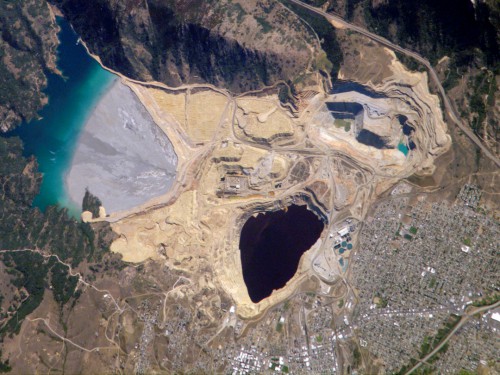Feudalism is back in Montana – or at least if SB379 passes, we’ll be well on the way.
SB379 “is to protect real property owners from unreasonable land use restrictions and reductions in land value due to county zoning.” Translation: make zoning impossible by allowing a superminority of owners to protest its implementation.
The real devil is in the details:
Section 2. Definitions. For purposes of [sections 1, 2, 4 through 9, 11, and 12], the following definitions apply:
(1) (a) “Affected property” means property taxed on an ad valorem basis on the county tax rolls and directly subject to a proposed zoning action.
(2) “Affected property owner” means the owner of affected property, including natural persons, corporations, trusts, partnerships, incorporated or unincorporated associations, and any other legal entity owning land in fee simple, as joint tenants, or as tenants in common.
(3) “Protest override procedure” means the procedures described in [sections 6 through 9].
(4) “Protesting landowner” means an affected property owner who protests a zoning action.
(5) “Successful protest” means a protest by owners of 25% or more of the affected property.
Section 5. Protest. (1) Within 60 days of the date that notice of passage of the resolution of intention to take a zoning action pursuant to [section 4] is first published, affected property owners may protest the proposed zoning action by delivering written notification to the board of county commissioners.
Notice how this assigns the right to protest to owners on the basis of area. Owners don’t even have to be people. A protest is a de facto vote. In other words, this policy is “one acre, one vote.” This bill elevates property rights, as in the 5th Amendment,
No person shall … be deprived of life, liberty, or property, without due process of law; nor shall private property be taken for public use, without just compensation.
above the Equal Protection Clause of the 14th Amendment,
No State shall make or enforce any law which shall … deny to any person within its jurisdiction the equal protection of the laws.
If the drafters of this bill are unclear as to which principle is the more fundamental, they could consult the Declaration of Independence,
We hold these truths to be self-evident, that all men are created equal, …
Update: one could also check the Montana constitution,
Section 1. Popular sovereignty. All political power is vested in and derived from the people. All government of right originates with the people, is founded upon their will only, and is instituted solely for the good of the whole.
I’ll gladly admit that zoning is a blunt instrument. But a de facto ban on zoning, with the idea that it’s a taking, guarantees a tragedy-of-the-commons outcome (unless you live in the faux-libertarian lalaland where property rights are fully allocated, markets are complete and there are no externalities). Even if that’s the road we choose to take, the governing principle must be “one person, one vote.”
Let’s see: government of the landowners, by the landowners, for the landowners – check. Elevation of politics above science – check. Montana is two thirds of the way to the Middle Ages! All we need now is to get rid of separation of church and state.

